Commentary
New Med School Retreats (Slightly) After Going All-In On DEI
Share:

Last year, Do No Harm reported that Duquesne University’s (DU) recently-opened College of Osteopathic Medicine had immediately broadcast its commitment to DEI with a pledge to pursue “increasing diversity within medicine.”
This commitment to DEI included the following items:
“Attracting medical school candidates who have a basic understanding of the importance of Diversity, Equity and Inclusion and a demonstrated desire to learn more.”
In other words, the school would deliberately recruit students based on their adherence to DEI ideology.
“Ensuring that Medical School faculty and staff positions include individuals who represent the various populations we will train and serve.”
Do No Harm has seen this language before: it’s often invoked by proponents of the notion that racial concordance – in which patients are treated by healthcare professionals of the same race – improves health outcomes. This argument, in turn, is used to justify discriminatory hiring and recruiting policies that pursue racial diversity. However, it has been thoroughly debunked; five out of six systematic reviews of racial concordance in medicine found no improvement in health outcomes, while the sixth is fraught with methodological problems.
“Training that incorporates curriculum with an extensive community engagement project that addresses health care disparities.”
“Launching a racial health disparities speaker series with the University’s Center for Integrative Health, offered to faculty, staff, students and the public.“
But now, it appears DU is retreating from its DEI endeavors – at least superficially.
Its updated webpage replaces its commitment to “Increasing Diversity in Medicine” with a commitment to “Building a Better Community within Medicine,” yet many of its action items remain exactly the same.
Other action items under the “Building a Better Community within Medicine” subheading are nearly word-for-word the same as under the previous DEI-branded iteration, but with DEI-oriented words substituted out.
For instance, “Attracting medical school candidates who have a basic understanding of the importance of Diversity, Equity and Inclusion and a demonstrated desire to learn more” is now “Attracting medical school candidates who have a basic understanding of the importance of building a better community by reducing health disparities and a demonstrated desire to learn more.”
It’s clear that DU has simply slapped a coat of less-offensive paint over its previous DEI branding.
Other diversity-centered webpages have also been taken down: DU’s webpage titled “Teaching for Diversity, Equity & Inclusion,” which previously touted the merits of “inclusive and equitable” teaching strategies, is no longer live.
The “Employment Diversity and Inclusion” webpage on DU’s website, which previously stated that DU was “dedicated to attracting, retaining and engaging a talented and diverse workforce,” is now titled “Community Building and Workforce.” That page still declares that DU is “dedicated to attracting, retaining and engaging a talented and diverse workforce.”
To be clear, DU’s website still broadcasts its commitment to train physicians that “exhibit less implicit bias.” Implicit bias refers to the notion that individuals hold unconscious prejudices against members of other racial groups, sexes, and various other classes; proponents of this theory often argue for training to remediate these supposed biases. However, there is little evidence that such “bias” actually predicts real-world behavior, much less leads to worse health outcomes for minority groups.
DU shouldn’t just rebrand its DEI programs with more benign terminology like “building a better community,” it should make unequivocally clear that it rejects this divisive, dangerous ideology.
This is the way to restore trust and communicate to prospective medical students and other members of the public that it will no longer engage in DEI practices.


